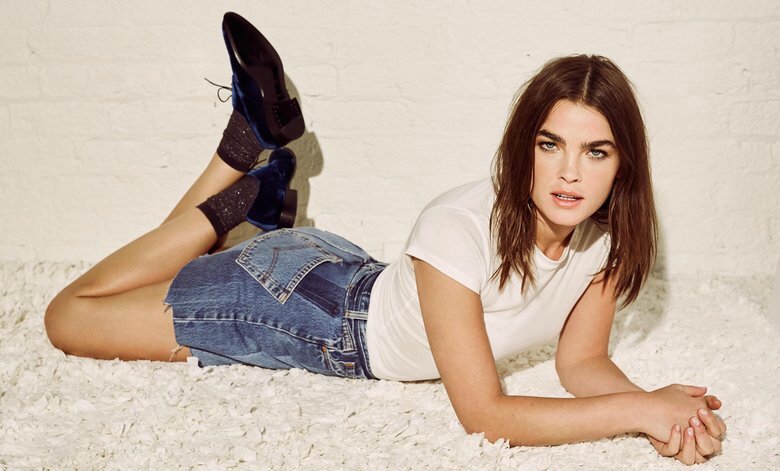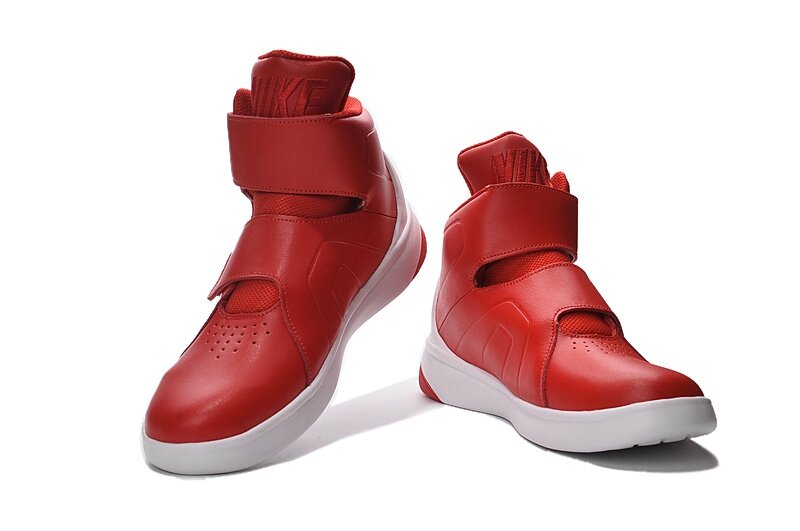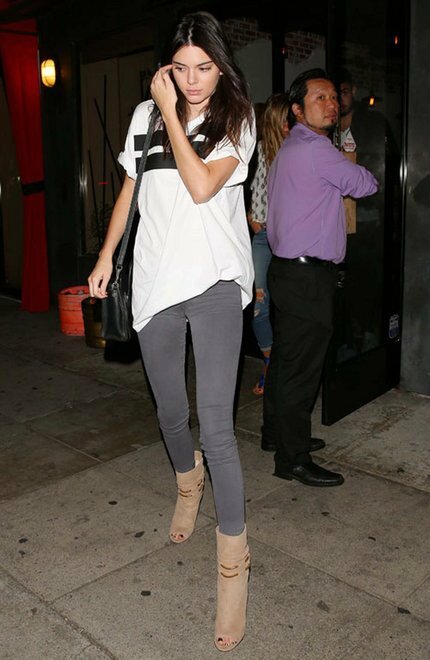The Fabric of Our Lives or the Planet’s Latest Threat? Fashion Startups Look Into Cotton Alternatives
Would it surprise you to hear that Kendall Jenner and Carrie Underwood have been wearing pants made of wood? It shouldn’t! They’re not stiff or awkward; in fact, it’s more likely that you probably couldn’t even tell that the skinny jeans and slouchy sweats worn by your favorite paparazzi bait are, in fact, made from eucalyptus trees.
The fashion business is in the midst of a reset, waking up to a whole new set of fabrics that go beyond the polyesters and synthetics of previous generations to find solutions that are both eco-friendly and fashion-forward. It’s about time: The fashion industry is the second-most-polluting industry in the world, just behind oil. Cotton, which has long been regarded as the most breathable and natural fabric, takes acres of land to grow and significant inputs of water. The average cotton T-shirt requires 2,700 liters of water from cultivation to dyeing, according to the World Wildlife Fund. Plus, conventional cotton uses pesticides, which are detrimental both to farmers and the soil that they work.
Advertisment
Wholesale Shoe Hub Cheap Air Max Shoes Air Jordans Shoes Online
Enter Tencel, a wood-based fiber favored by labels like the L.A.-based DSTLD, which uses it in its hip-hugging, low-rise skinny jeans. Lenzing of Austria, one of the go-to suppliers for environmentally conscious brands, converts the pulp from sustainably harvested eucalyptus trees to produce cellulose, which is processed. The result is a fiber that’s highly breathable, much softer than cotton, and far less prone to wrinkling, and has been in part responsible for some acclaim: Lenzig was recognized by the European Commission in 2000 with an award for its eco-advances in sustainable technology.
Kendall Jenner steps out in DSTLD's ankle length skinny jeans made of Tencel, a wood-based fiber.
Photo: Courtesy of DSTLD
Lenzing is also prized for its “closed loop” production cycle: The solvent employed to convert the pulp into a usable piece of fiber is nontoxic, and it’s recovered during the manufacturing process. Its production units also run on renewable energy more than half the time. Add to this that Tencel, which Lenzing refers to as a “botanic fiber,” is completely biodegradable, and you have something close to a completely green fashion product. And rather than being coarse or shapeless (common complaints of eco-friendly apparel), “customers can’t believe how soft and luxurious it feels,” says Paul Roughley, DSTLD’s design director. The only downside is that Tencel is not as widely available as cotton and can cost twice as much.
But that’s not deterring other brands from adopting this botanic fiber. It girl–beloved slow-fashion brand Reformation has become very vocal about its love for the pulp-based alternative. The label’s website touts Tencel as the “Beyoncé of fabrics” for all of its planet-loving properties. Eucalyptus for Tencel can be grown on marginal lands rather than on land used for food crops, and with little irrigation, and it uses 80 percent less water than cotton, says Yael Aflalo, founder and CEO of Reformation. From scoop-neck tanks to minidresses, Reformation uses Tencel throughout its collection. “Tencel has pretty much all the same characteristics of cotton, so it’s a very easy alternative to knit fabric. It’s pretty much a ‘no trade-off’ fabric for us,” Aflalo adds.
And it’s not just Tencel: Culver City, California–based startup MeUndies sources a similar pulp fiber, the moisture-wicking MicroModal, for its men’s and women’s underwear. (For Modal, it’s beechwood fiber, rather than eucalyptus, that is processed.) London-based designer Alice Asquith launched an eco-activewear brand more than a decade ago called Asquith. In 2007, she discovered bamboo towels, she says, and fell instantly in love: “I just loved their softness, absorption, and durability.” It helps that bamboo grows faster and absorbs more carbon dioxide from the environment than hardwood trees. Like cotton, it’s breathable. And the fabric offers durability, drapes beautifully, absorbs moisture, and, according to Asquith, has antibacterial properties that make it “great for sensitive skin—and it wears so well that it’s the opposition of disposable fashion.” To improve flexibility, however, Asquith’s lounge pants, tanks, and tees are made with 95 percent bamboo fabric (the remaining 5 percent is elastic). She has since developed a blend of bamboo and organic cotton for her leggings that she calls “Bambor”; it is about 60 percent bamboo, 30 percent cotton, and a little elastane. And as the world skews increasingly toward a fixation on health and wellness, it very well may be the future. “To me, it has always felt very odd that people wear synthetic fabrics for such a holistic practice as yoga or Pilates,” says Asquith. “It’s like putting organic food in your body— it’s just better for you.”






/https%3A%2F%2Fassets.over-blog.com%2Ft%2Fcedistic%2Fcamera.png)
/https%3A%2F%2Fstorage.canalblog.com%2F65%2F68%2F1287460%2F119974884_o.jpg)
/https%3A%2F%2Fi.guim.co.uk%2Fimg%2Fmedia%2Fd880249106f3a9876725c813fe94c24bf0b51c26%2F0_326_4971_2983%2Fmaster%2F4971.jpg%3Fw%3D300%26q%3D55%26auto%3Dformat%26usm%3D12%26fit%3Dmax%26s%3Dc577e94723ee25da5ad8959c874348d7)
/http%3A%2F%2Fwww.theage.com.au%2Fcontent%2Fdam%2Fimages%2Fg%2Fq%2Fl%2Fp%2Fq%2Fo%2Fimage.related.articleLeadwide.620x349.gqlv7b.png%2F1470393037955.jpg)